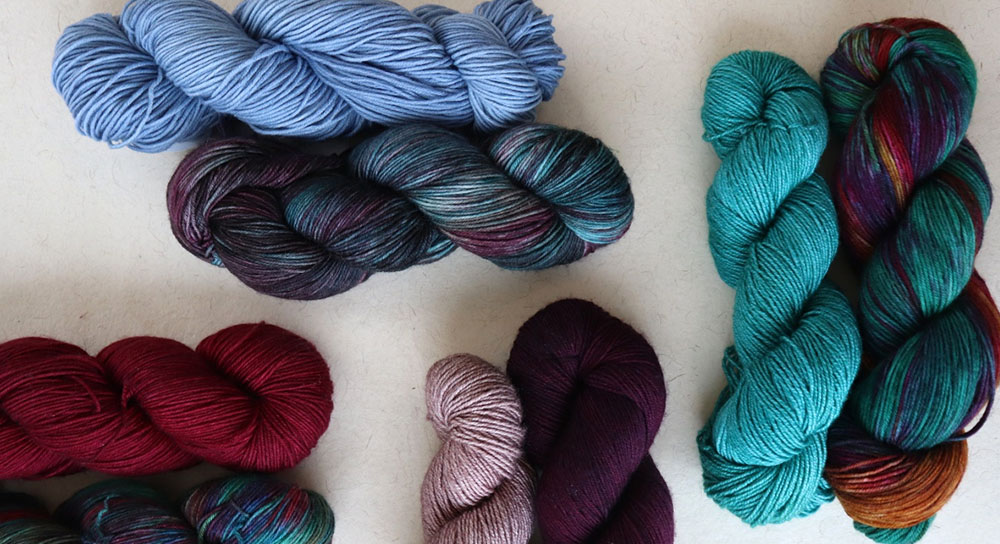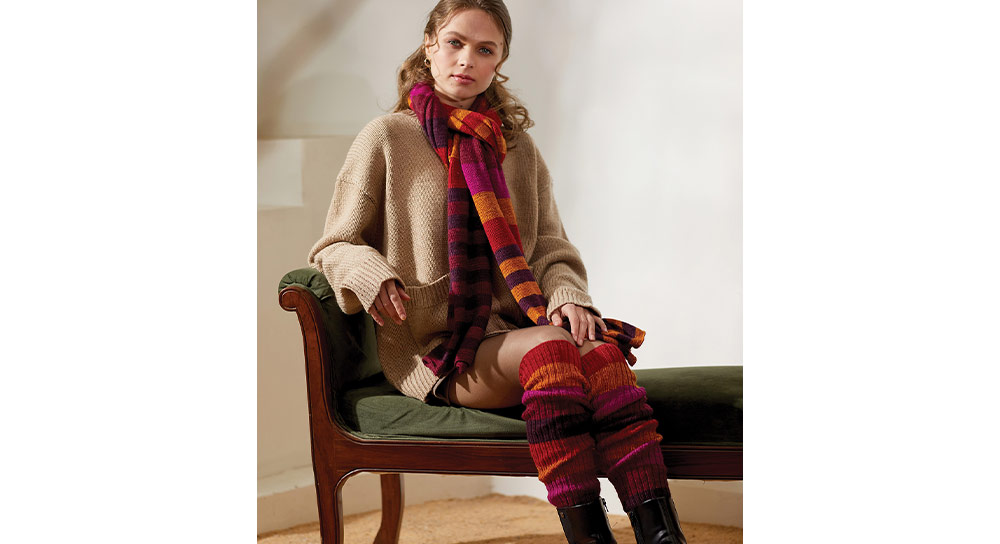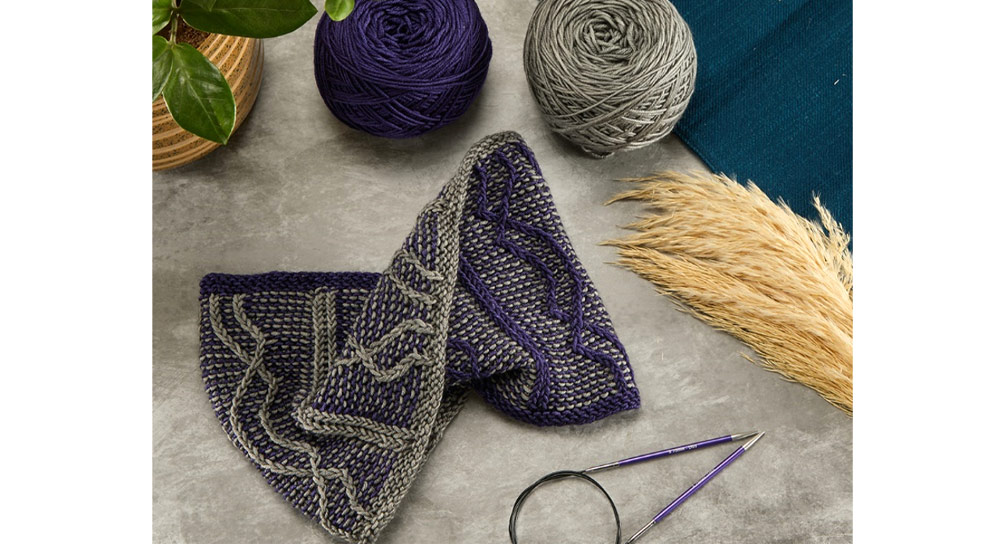The Complete Guide on Mixing Yarn Weight for Unique Textures
- Blog Views : 316
- Symfonie Yarns
- 07Jan, 2025

Want to add unique textures to your knitting projects? Try mixing yarn weights and see the magic happen! Crafts such as knitting and crocheting offer endless possibilities with colorful yarns for creating garments, accessories and home décor. By combining different yarn weights, you can add unique textures that transform your projects to extraordinary. If you never mixed two yarn weights, then now is the time to get started. In this blog, we’ll walk you through the basics of mixing yarns of different weights, explore the types of yarn you can use, and share handy tips to achieve seamless results.
Understanding Yarn Weights
Before diving into mixing, let’s get familiar with yarn weights. The weight of the yarn refers to the thickness (the categories are from hair-like to rope-like) which influences the overall look and feel of the project. Yarn weight is an important factor that shapes the project whether you are making stitches with your knitting needles or crochet hooks.
Here’s a brief yarn weight chart:
Yarn Weight |
Fabric |
Ideal for Projects |
Fingering |
Light and versatile |
Delicate shawls, socks, and baby garments. |
DK |
Versatile with good drape |
Sweaters, lightweight scarves, and blankets. |
Worsted |
Heavier and more robust |
Excellent for winter garments and home decor projects. |
Chunky and Bulky |
Thick and Cozy |
Hats, blankets, and oversized garments. |
Each weight brings unique characteristics, and combining them allows interesting textures. Refer to our complete guide to yarn weights to know more about the subject.
Now, getting to the topic of mixing two different yarn weights the fabric knitted will have characteristics of both. Fingering with worsted yarn or DK with worsted yarn has an interesting texture.
But before you mix two yarn weights, also consider:
- Yarn fiber content – Mixing two weights has interesting textures to offer but consider if the two fibers also complement each other. Merino wool with a blend of merino-silk flows beautifully but it might not be a good choice for merino wool with cotton or bamboo and merino-polyamide with cashmere or specialty fibers. In fact, two fibers may lead to pilling, color transfer and overall, not-so-attractive drape and feel.
- Colors – When working with contrasting shades, mixing yarn weight may subdue the colorwork effect. Also, if you are aiming for a monochrome or gradient effect with colors plan the weights so that they work favourably.
- Project – Think of the project and plan the steps accordingly so that mixing the yarn weights is harmonious. For a shawl, you can work on a gradient or sections. For cardigans and sweaters, you can use different weights for sleeves, necklines and edges.
Why Mix Yarn Weights?
Mixing yarn weights is a creative technique with amazing results. If you’ve not given a try here’s why you must:
- Adds Visual Interest: Contrasting textures make patterns pop and add dimension to your work. For example, fingering yarn with worsted weight yarn creates pronounced textures that work beautifully for sections of the pattern when you need to add visual interest.
- Great Way to Use Up Leftovers: Combine yarn skeins from your stash to create unique pieces. For example, you can plan out a shawl, starting with DK or worsted weight yarn with edges of fingering weight or making a lace pattern with fingering yarn supported with DK and worsted weight. You can also make a patchwork blanket or scarf but make squares with a particular yarn.
- Experiment with Textures: Pairing smooth DK weight yarn with lofty worsted-weight yarn can result in eye-catching designs. Incorporate texture into your design by alternating yarn weights row by row. This technique is perfect for scarves or cowls, creating a tactile, layered effect.
- Create Gradient Effects: Blend fingering weight yarn with DK or worsted to achieve subtle transitions in thickness.
- Experiment with Colorwork: For pronounced effect in colorwork patterns use DK weight yarn as the base and fingering yarn for delicate motifs or use worsted weight for intarsia patterns in the background of DK or fingering yarn.
What can you make? The Best Project Ideas for Mixed Yarn Weights
1. Striped Scarf
Use Terra fingering weight yarn for the base and Bella worsted-weight yarn for bold stripes. The contrast in weight creates a dynamic and textured look.

2. Gradient Blanket
Blend Terra, Viva and Bella yarn in gradient shades for a stunning ombre effect.
3. Textured Cowl
Alternate between DK-weight yarn and worsted-weight yarn to create a chunky yet lightweight cowl. Use bold colors for a striking appearance.

4. Layered Sweater
Combine fingering weight yarn for sleeves and Merino DK for the body. The difference in weight adds interest while maintaining a cohesive style.
How to Overcome Challenges when Mixing Yarn Weights
Experimenting comes with challenges but with creativity guiding you the result will be:
- Make a Gauge Swatch - Whether you knit or crochet, make a gauge swatch before you begin your project and adjust yardage accordingly.
- Balance Uneven Tension - When mixing yarn weights, uneven tension may occur. To fix this, use larger needles for lighter yarns and smaller needles for heavier ones. Adjust your technique until the stitches align.
- Wash and Block - Different yarns may behave differently when washed. Pre-wash and block your swatches to test how the yarns interact.
Mixing yarn weights unlocks a world of creative potential in knitting and crocheting. By combining different weights like fingering, DK, and worsted, you can craft unique textures that bring your projects to life. Whether you’re working with the merino-polyamide Terra yarn or the cozy extrafine merino wool Bella yarn, the possibilities are endless. Start small, experiment with swatches, and let your creativity flow.
-
- 28 Mar,2025
-
- 25 Mar,2025
-
- 21 Mar,2025
-
- 19 Mar,2025
-
- 17 Mar,2025
-
- 13 Mar,2025
Copyright © Symfonie Yarns 2025 - all rights reserved | RSS Feed
